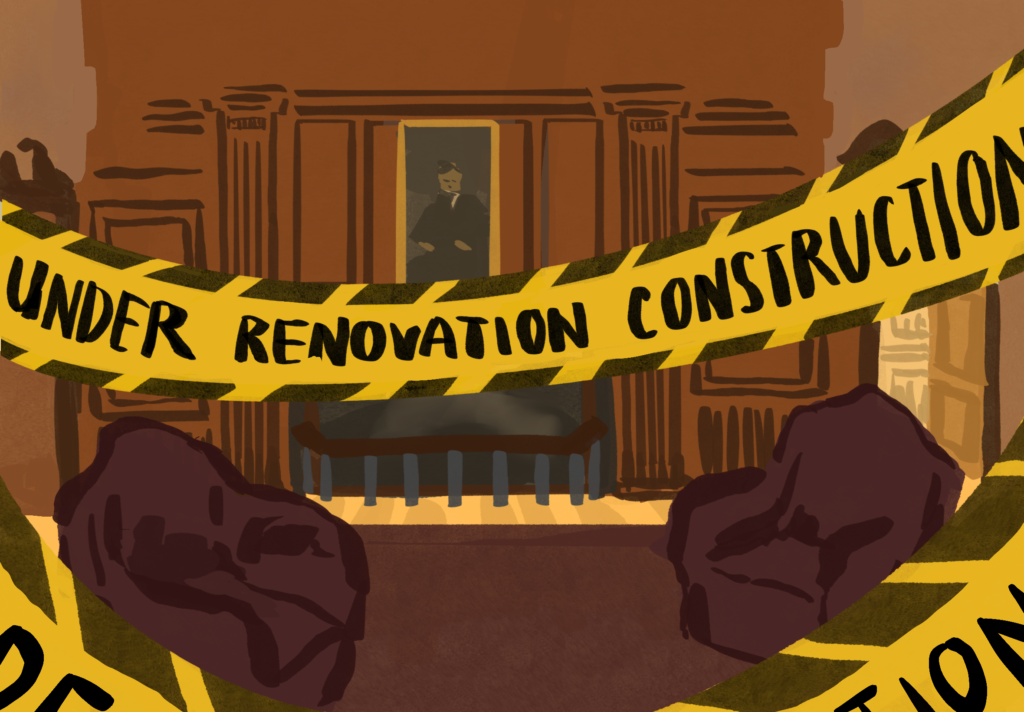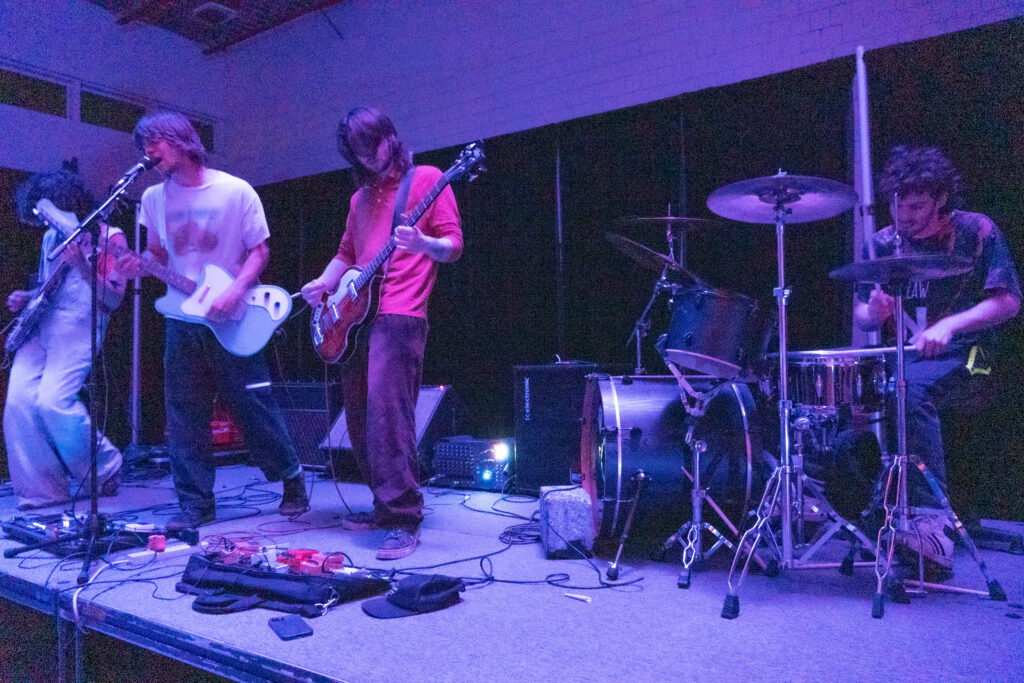The Science Research Program (SRP), one of Choate’s seven signature programs, presented its annual Student Lecture Series (SLS) on November 9 and 10 that summarizes the research projects carried out by 16 sixth-form participants. Held simultaneously in the Elman and Getz Auditoriums, the 15-minute presentations are followed by a brief Q&A session.
Split into two sections — biological sciences and quantitative sciences — SRP is a rigorous experience that drives students to explore their area of interest in a professional environment. The four-term course sequence begins in junior fall, where students write summaries on scientific writing of interest and reach out to principal investigators to find research internship opportunities that will take place over the summer for a minimum of eight weeks. Participants then prepare for their summer program by training in research techniques and laboratory equipment during junior winter and working towards a sixty to seventy page review article on the subject of their internship in the spring.
As soon as students returned this fall, SRP students dove straight into their three culminating projects condensing their summer work into a professional poster hung around the Carl C. Icahn Science Center, a twenty page publication-worthy journal article, and a public presentation to the School.
Intending to create a clear and easy-to-follow narrative arc for the SLS audience, students worked through a “story-building” phase, in which they drew out the story they wanted to tell on paper. Beginning around the end of the second week, students made practice presentations every several weeks throughout the term, adjusting their talks after exchanging feedback among themselves each time.
Dr. Chris Hogue, the science teacher leading the quantitative cohort of SRP, mentioned how different the process was for each student, “Sometimes they totally changed their idea of how they want to present it multiple times, and other times it’s just little tweaks along the way, but we definitely start the process very early.”
As in the past, the SLS talks covered a wide range of topics. In the biological section, Ava Lee ’23 spoke about system-wide profiling of bromodomain target engagement in cells, Luke Callaghan ’23 presented on investigating synaptic plasticity in the hippocampus, and Chloe Chan ’23 discussed the effects of R290Q mutation in OPA1 on mitochondrial morphology.
On the quantitative side, Ryan Kim ’23 talked about interpreting facial expressions from interactions with a robot, Shauna Schiffman ’23 spoke about deep learning image analysis of melanoma cancer data, and Joy An ’23 presented on searching for lines of dark-matter-deficient galaxies formed from collisions.
For SRP students, the process of planning and delivering the presentation was both a stressful and thrilling experience. Alex Skrypek ’23, who conducted research in developmental biology, specifically methods of DNA damage repair, said, “It was challenging to condense an entire summer’s worth of research into a 10-minute presentation … However, I really enjoyed sharing my field of DNA damage research with Choate. It was amazing to present and put up my poster in the science center!”
Je-Won Im ’23, another student in the biological cohort whose research was on finding the differential gene expression of patients with different types of responses to CAR T therapy, echoed Skrypek’s sentiment on the challenging process. “I spent a lot of time trying to simplify the area of study that my research was in into a short presentation that even freshmen in the audience could understand.” She continued, “Fortunately, we also wrote a final journal-style article at the end of SRP, after SLS was done, which gave me a lot more space to elaborate on the detailed aspect of my research.”
The SLS presentations received positive feedback from the school community. Suzie Kim ’24, an audience member of Thursday’s session, said, “The talks were well-spoken and well-prepared. I found Jewon’s presentation, in particular, to stand out to me the most, just because my own family is in the cancer field, so her work is very relevant and interesting. I was also impressed by the amount of work she was able to put in those few minutes.”
Ria Tyagi ’24, another audience member, commented, “I really appreciated how they oversimplified everything but still kept the gist of it.” She continued, “It was a great chance to see my peers doing such amazing things in all those different fields and how they’re contributing to the professional scientific research community!”
As a faculty member who has been attending SLS talks for more than a decade, Dr. Hogue described how teachers like him have actually gotten to see the progression of science: “You know, if you come and watch a single SLS in one year, it might not seem like that much really got accomplished … but if you look over the course of a longer time, you know you really start to see the progress.”
As SLS is one of the culminating expereinces of SRP, Dr. Hogue hopes that participants will learn the skill of presenting their scientific work to a broader audience. “I tell students very early on that if you can’t communicate the work that you’ve done and the discoveries that you’ve made to the outside world, not only does the world not get the benefits of that research, but others can’t pick up your mantle after you’re gone and continue that work or to take it in slightly different directions,” he said.



